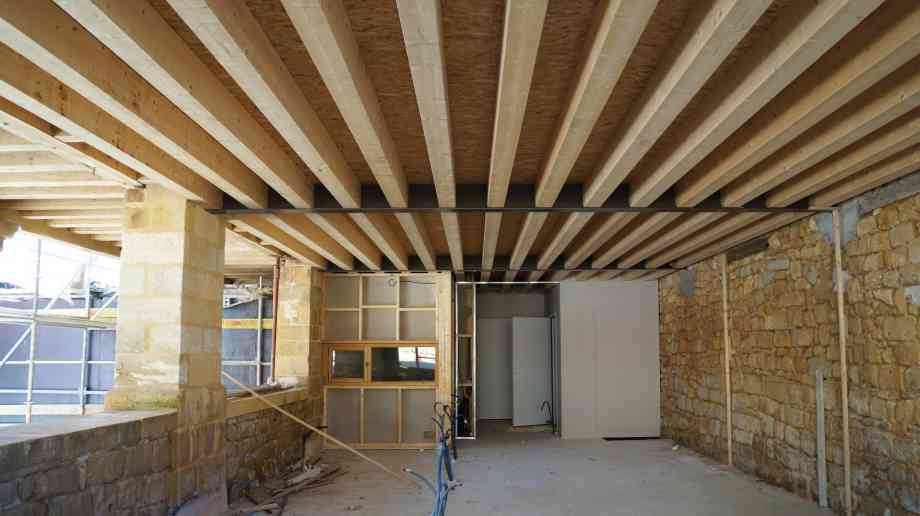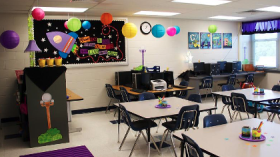
School safety during maintenance, building and renovation work
Nathan Davis, water and leisure team leader at the Royal Society for the Prevention of Accidents, talks about the importance of safety management during school building work.
School buildings need to change, adapt and be repaired. But what issues need to be considered to make sure that the work is completed safely and that the end result will actually be safe for the teachers, children and visitors in the years to come?
In recent years there have been a number of high profile serious incidents in schools which related to the condition and fabric of the buildings. Keane Wallis‑Bennett, aged 12, died when a changing room wall collapsed on her at a Glasgow primary school in 2014 and 16 schools in Scotland were closed earlier this year due to concerns with construction standards.
The exact cause of these incidents are still being established by the authorities. Mercifully these cases are the tragic exception, nevertheless large numbers of children are sent to A&E each year after suffering an injury at school.
A key issue is when repairs actually need to be made and money spent – there is always a question of cost and practicalities. Duty holders need to think very clearly about the severity of incidents rather than spending too long guessing the likelihood. If there is a chance that a serious event can happen would the legally famous ‘Reasonable Man’ fix it? The point is not to guess whether something is dangerous or not - if in doubt get specialist advice.
Clearly the design of any new structure needs to be clear on avoiding the major causes of accidents to children. As children are developing their strength and fine motor skills, they will run around, bump, trip and fall as they play. However serious outcomes can be designed out of schools, while maintaining an interesting and engaging environment.
There are a number of common issues that need to be carefully considered when new designs are produced.
Are the floor surfaces wide, flat and level? How easy will it be to clean them properly and maintain them in the future? Is it possible to specify or obtain a slip resistant value for a flooring surface? Are blind corners avoided? Are cloakrooms, toilets and vestibules actually large enough to accommodate the needs of the children?
Think about edges and falls – will children fall or slip into glass, into blunt edges of walls or can they easily climb or fall under, over or through the edge protection specified? When it comes to falls, design windows and ledges to level to prevent falls, including fixed seating and ledges close to the window which will act as a step. With glass – replace old non-safety glass with toughened non-shatter glass.
Further questions include where will storage materials be kept? Is adequate power supply provided to avoid trailing cables? Can power, including gas, be isolated quickly? Are RCDs, or similar, fitted to the electrical supply? Are TLVs fitted to the hot water supplies?
Managing the renovation process
As a project size increases in complexity and cost, so does the thought and effort required to deliver it safely. However, the process for getting the work conducted is the same. There is a piece of legislation called the Construction, Design and Management Regulations (CDM). The main aim of this law is to make buildings safe to build, and importantly safe for the people that use and maintain it. CDM must be followed for all construction work.
The key to getting construction projects right is: sensibly planning the work so the risks involved are managed from start to finish; having the right people for the right job at the right time; cooperate and coordinate your work with others; having the right information about the risks and how they are being managed; communicating this information effectively to those who need to know; and consulting and engaging with workers about the risks and how they are being managed.
The first step is to clearly establish who the client is. The need may be yours, but the responsibility and authority may rest with another individual or organisation. This may be straightforward, but with some business models, the person or organisation that may not actually be clear. For example with PFIs, PPPs, DBOMs and trusts. If you are not sure get all parties to agree who will accept the client role. This is very important for CDM notifiable jobs.
Ensuring competence
Schools and teaching staff need to rely on competent architects and builders. Authorities vary on the ways that these are engaged. If you don’t have the support of a local authority you must ensure that any people you employ are competent and this includes having a suitable level of experience in the work that you need completing. Most schools have a contractor’s procedure and this principle should be applied to any architects and other designers that you use.
Competent, experienced people will always have regular meetings and discussions with you to establish what you need, how you intend to use the building and what you already know about the structure and fabric e.g. is there an asbestos survey.
At an early stage, think about having an early meeting with all parties to establish the boundaries of the project, budgets, timescales, and especially standards for work on site. This should include issues that may be unfamiliar to all construction staff e.g. behaviour on school premises, DBS, working hours, and location restrictions, use of language, and how you will organise issues such as transport and parking.
Considering all important information
You should provide the designers and builders with the information they need to work safely and deliver the project on time. Among things to think about are known problems with the structure, and the problems that you need the new building to overcome. Be aware of the format needed for the tests, system diagrams - e.g. paper, CAD which will be provided in the building file.
Know your standards for working at height. This is a common cause of serious accidents during construction and for maintenance staff. For example, are you happy to use a tallescope? Are you comfortable with training staff to use a fall arrest system, or would edge protection be better? What protection is needed to prevent children getting onto the roof?
How will ‘hot works’ be managed? Fires during construction activities are not uncommon and it would be terrible for the school to burn down during the long anticipated improvement work. How will the new building be used, and will the facilities be suitable for all your children and staff? Will the new building be more susceptible to arson?
There are three key roles, the client, the designer and the principal contractor. These three parties will need to be formally appointed and arrangements made for them to work together.
The client must provide resources and appoint competent people into job roles. The designer must aim to design out, or minimise risks to health and safety, both during the construction and especially during the use of the structure. Finally, the principal contractor is responsible for delivering the construction phase safely and managing sub contractors on site.
Think about how your fire and emergency arrangements will need to change. What risk assessments will need to be reviewed during the work? What temporary arrangements will need to be implemented? Who needs to know? Do the neighbours, outside groups need to make changes to accommodate the work?
When the work starts, ensure that the boundaries between the work and the schools activities are clear and robust. Children will be interested in the building site. Many builders find it useful to give a site tour to children to satisfy any enquiring minds or nervousness about the noise and mess created. Teachers may like to build curriculum and PHSE lessons around the work to encourage understanding and practical real world learning e.g. how many bricks will be used? What skills might be needed to be a builder? What are the dangerous things about building sites? During the build, maintain a programme of daily or weekly meetings with the contractors to discuss any ongoing issues.
Prior to handover
Work with the contractor on snagging issues. Never accept the building if it is clearly substandard. Think about obtaining the services of an independent third party if you don’t feel confident yourself, although you should establish this at the project inception.
When the construction phase is practically complete make sure that you are provided with an accurate building file. The building file is critical for the ongoing life cycle of the building. Maintenance staff, visiting contractors and future architects will all have an interest in the contents of the file.
Getting it right and keeping it up to date will increase safety confidence and reduce costs in the future. Being clear on standards will help to smooth the path of any corrective action that is needed within the defects liability period.
The safety of the users and maintenance staff starts with a clear picture of how the structure will need to be used and working with the specialists to get it right, design out hazards and build it correctly.
Further Information
www.rospa.com
Latest News
12/12/2025 - 11:39
The government has announced at least £3 billion to create tens of thousands of new speci
12/12/2025 - 07:07
The findings suggest that children and young people attending schools in the North of England are less likely to take part in and benefit from residential visits.
11/12/2025 - 13:52
Ofqual has launched a 12-week public consultation on its proposed approach to regulating on-screen exams in GCSEs, AS and A levels.
11/12/2025 - 09:49
A report by Ofsted and the Care Quality Commission (CQC) finds that support for children with special educational needs and/or disabilities (SEND) who do not attend school full-time is too inconsistent.
11/12/2025 - 09:37
The easy-to-use web-based tool is designed to help schools estimate how an air filter unit could impact air quality and energy consumption in a classroom.







